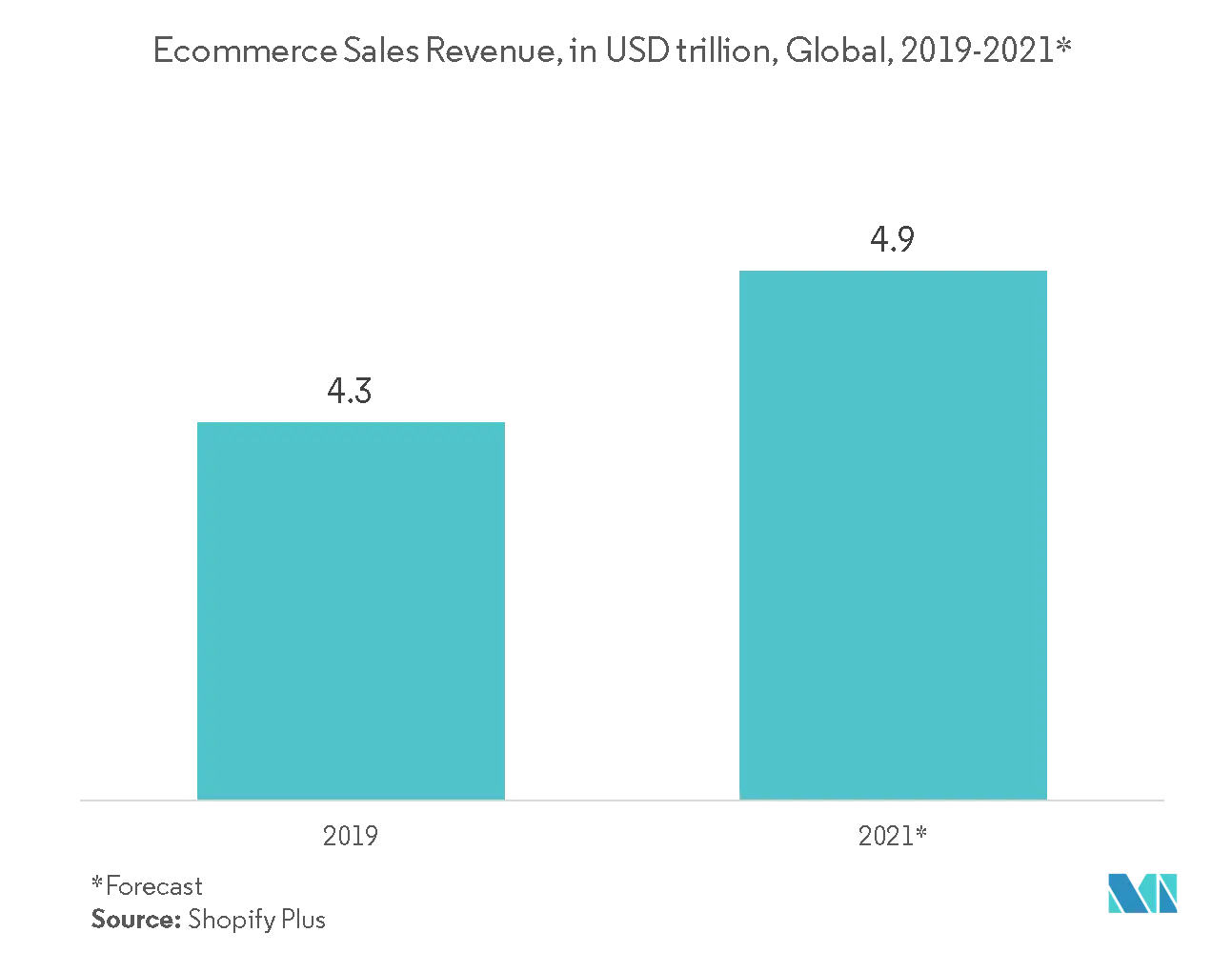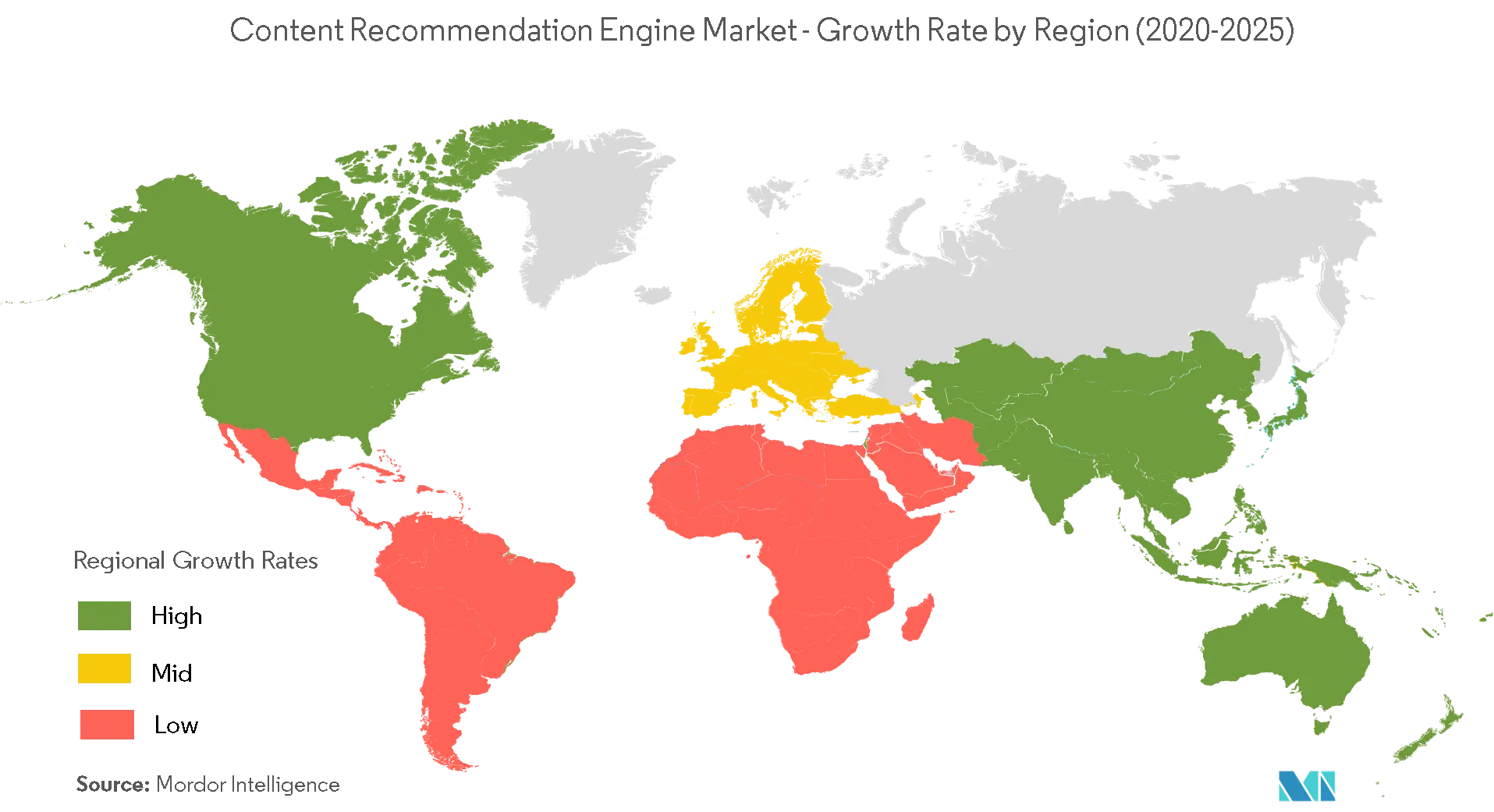Market Trends of Content Recommendation Engine Industry
This section covers the major market trends shaping the Content Recommendation Engine Market according to our research experts:
E-Commerce to Witness Significant Market Growth
- The biggest challenge for e-commerce businesses is ensuring superior customer service to shoppers. The massive adoption of the Web as an e-commerce platform has led to the fundamental change in a way that businesses of all sizes interact with their customers. The use of content recommender systems in an e-commerce environment can impact financial performance as well as the intensity of the dialogue with customers through increasing Cross-sell and building loyalty.
- According to Aspect Software Inc., in the United States in 2018, the churn rate for retail was 27%, and for online retail, it was 22%. Further, Recurly analyzed that more than 900 e-commerce sites that use their subscription management platform over the 24 months (January 2017 to December 2018) found that there was a 10.65% churn rate.
- With increasing churn rate percentage, e-commerce players are more focused on customer purchase activity and based on it, the recommending products are shown to the customers through their content recommendation platform.
- By mapping certain keywords from the product text, the content recommendation engine enables eCommerce businesses to make precise and accurate recommendations based on a single customer’s purchase history, to scale the recommendation engine to more users and thereby boost RO, to suggest new products by training the algorithms with selective keywords and demographic details of specific customers.
- This type of recommender engine is widely used in niche eCommerce stores (Discogs and Artsy use this approach). Further, Amazon Personalize blends real-time user activity data with user profile and product information to identify the optimal product or content recommendations. In the second quarter of 2020, Amazon's net revenue from the online sales segment amounted to almost USD 45.9 billion, and this revenue is majorly contributed through its content recommendation platform. According to Amazon, 35% of its sales are driven by its recommendation engine.
- Further, a player such as Episerver includes Commerce, Content Management, Search, Personalization, A/B Testing, Analytics, and Marketing Automation in one cloud subscription, which provides solutions to the e-commerce players catering to the market growth.

North America to Register the Highest Growth Rate During the Forecast Period
- North America is anticipated to be a significant revenue-generating region, thereby highly focusing on the growth of innovations across the US and Canada regions. These countries have the most competitive and rapidly changing market across the globe.
- Netflix remains the leading streaming platform of the United States, with Amazon Prime Video, Hulu, and HBO Now. Companies like Netflix collect thousands of data points from several places for making suggestions to users with the help of the tool known as a recommender engine.
- With over 7,000 movies and shows in the Netflix catalog, it is nearly impossible for users to find movies they will like on their own. The large platform needs a recommendation engine algorithm to automate the search process for users.
- Further, YouTube is the second most visited website in the United States, with around 400 hours of content uploaded per minute, with recommending fresh content. Google has switched to deep learning as a general framework for learning the problems. Since Google Brain has released Tensorflow, it became sufficiently easy to train, test, and deploy deep neural networks in a distributed fashion.
- Moreover, according to the US Bureau, e-commerce sales in 2018 were USD 524 billion, while in 2019, it increased to USD 602 billion. With increasing online sales, the adoption of content recommendation in such a segment is significantly catering to market growth.


